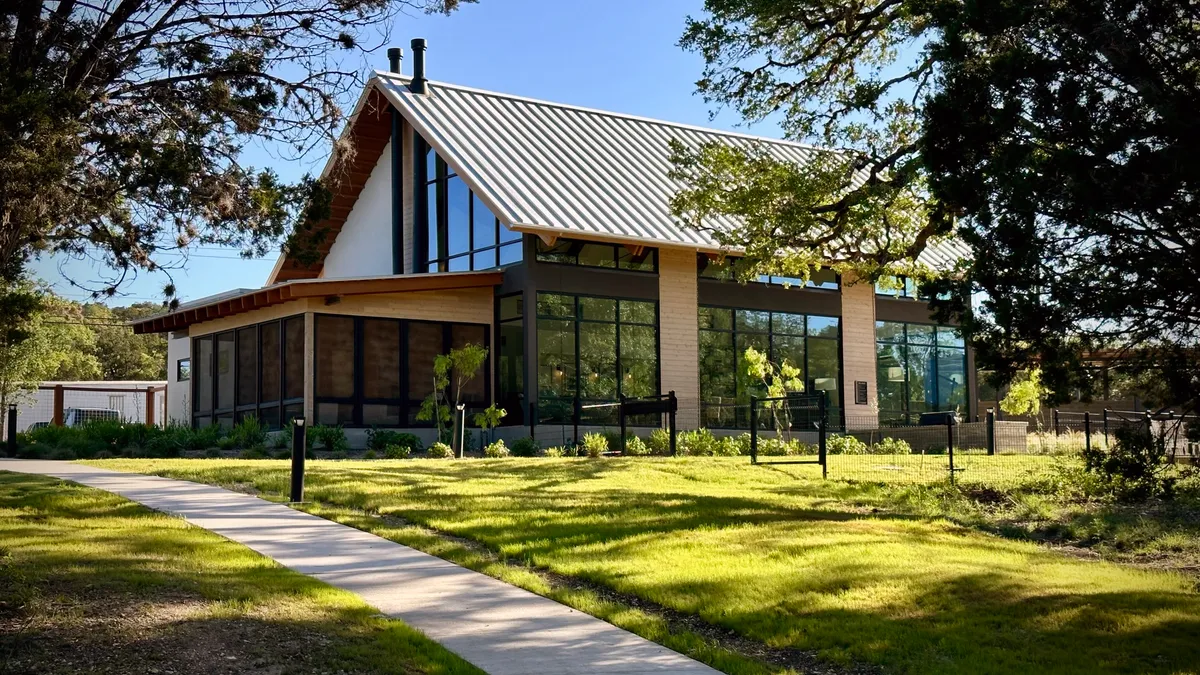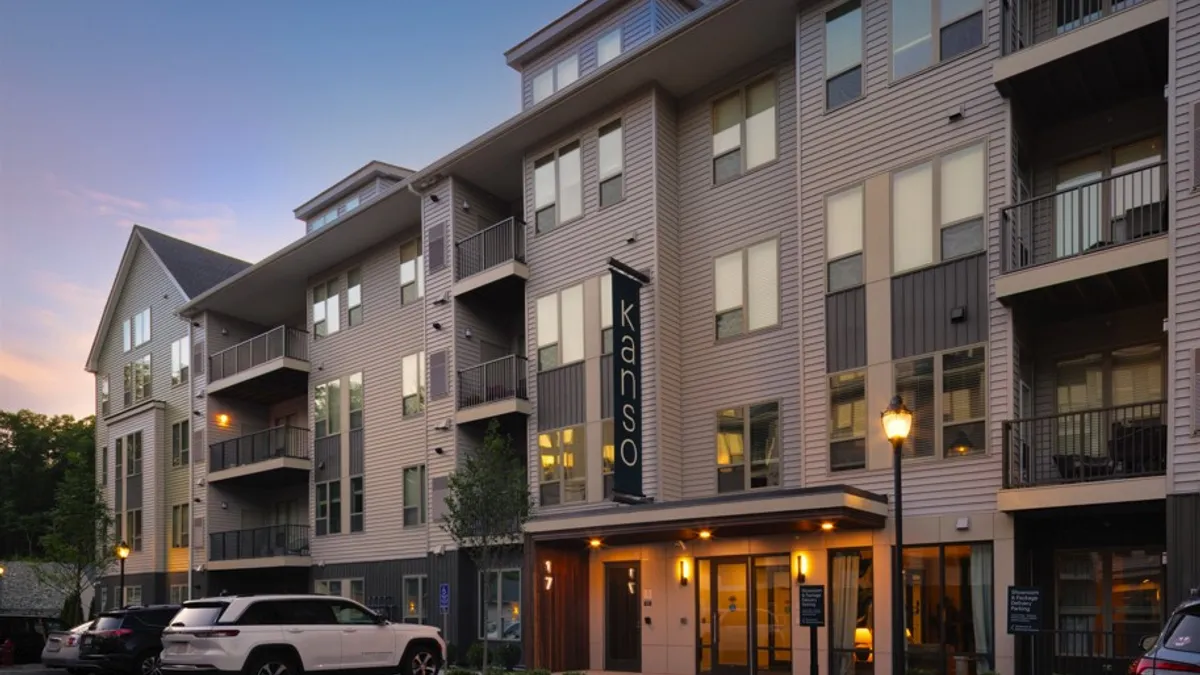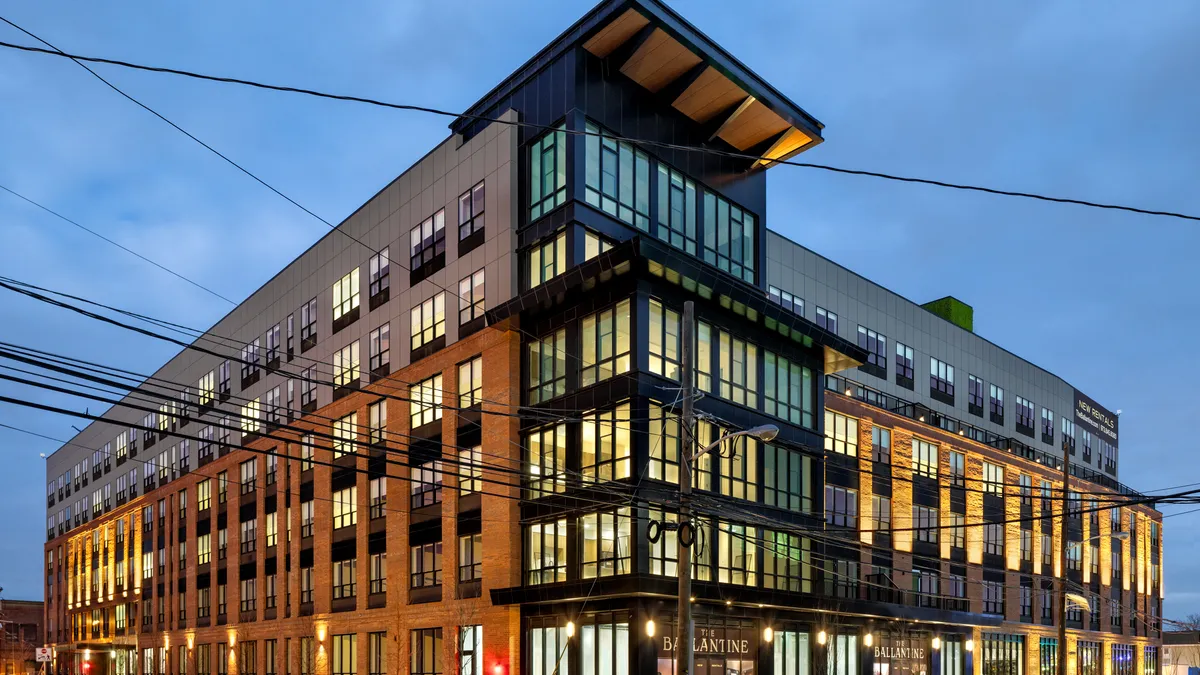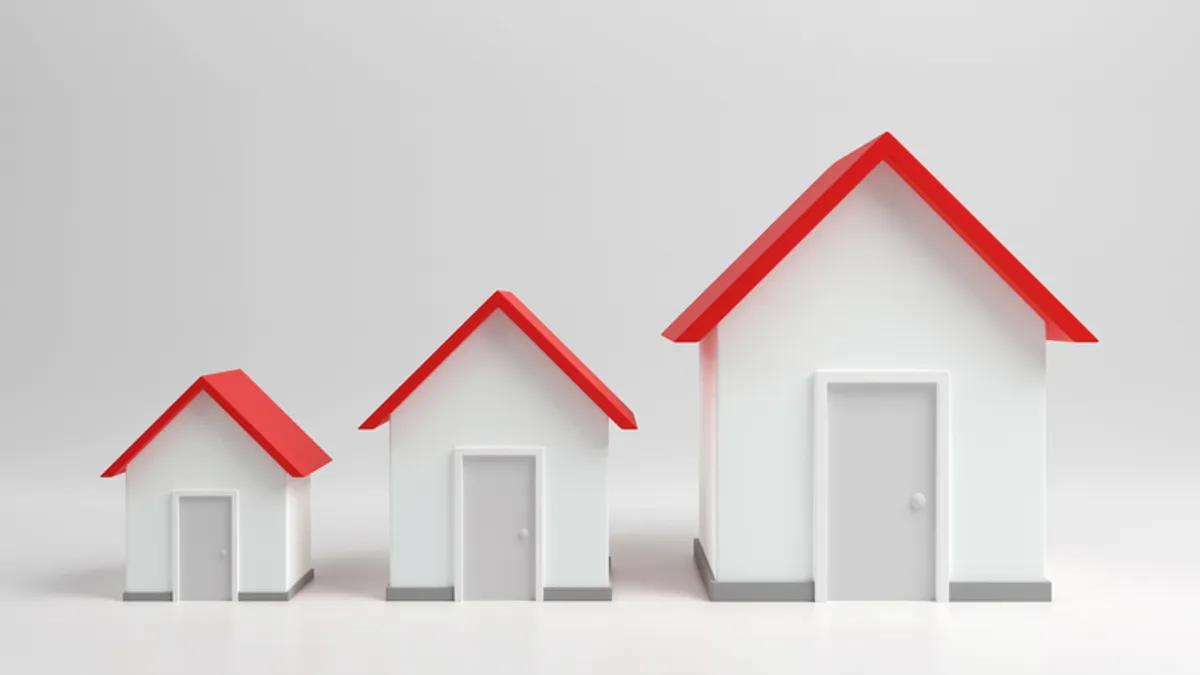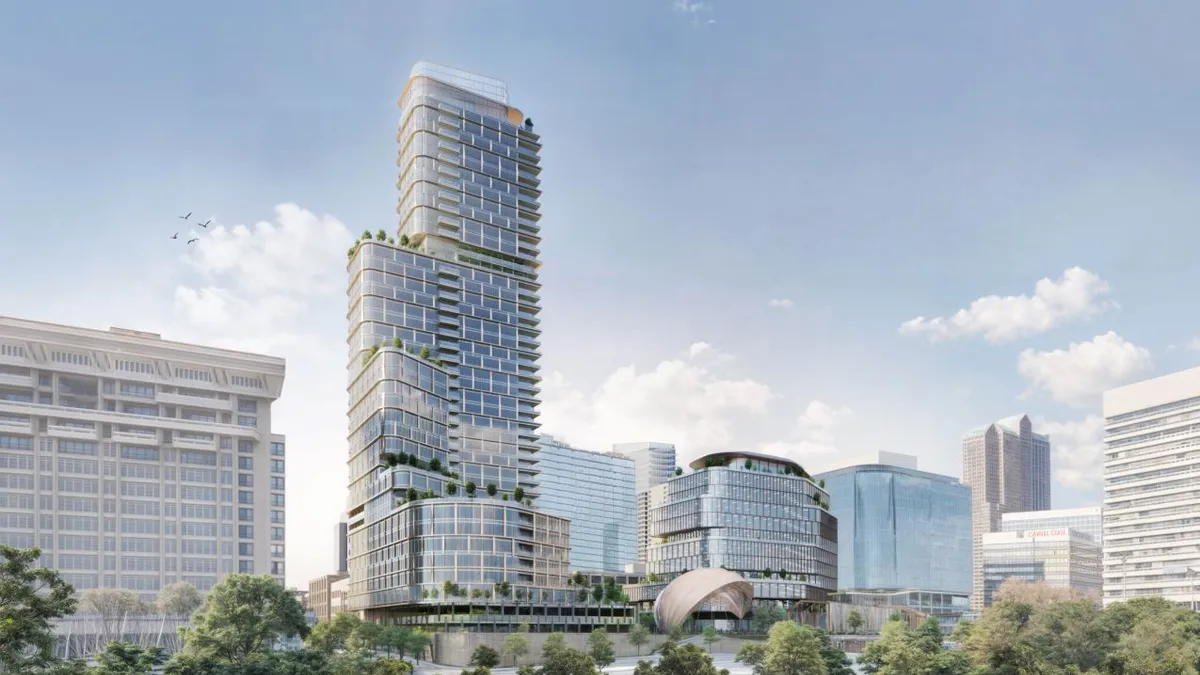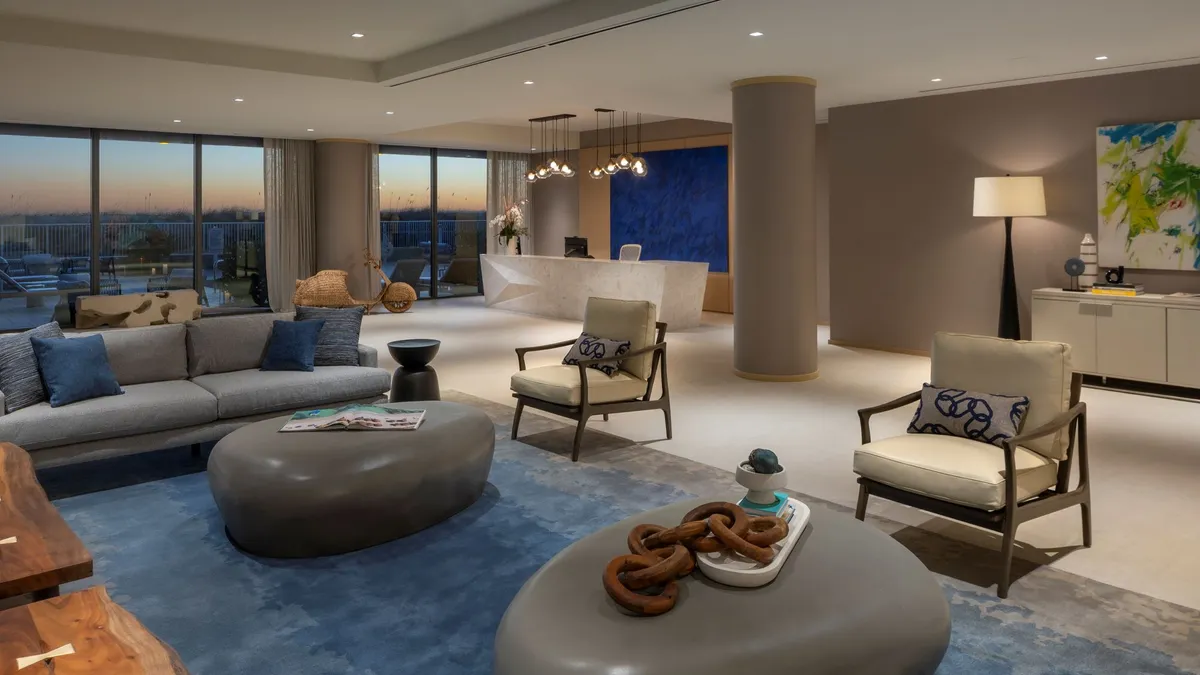As operating costs and interest rates remain high despite recent cuts, Kris Feldmann, founder and design principal at San Antonio-based CREO Architecture, has observed two ways his firm’s multifamily clients have tried to increase their bottom line. One is by cutting construction costs, and the other is by shrinking amenity spaces, giving that square footage over to units instead.
“I think that’s a real risk, and something that we would strongly discourage our clients from doing if they can afford to,” Feldmann told Multifamily Dive, “just because of the importance of the amenity space as a mixing spot for residents.”
In its amenity work — including the clubhouses for Copper Canyon in Bulverde, Texas, and Arbolada in San Antonio — Feldmann and his team aim to create spaces that encourage social interaction and foster connection, elevating value not only for the tenant, but for the owner, even without the extra space given over to units.
“There's a lot of studies that prove that the more friends that residents have within the community, the more likely they are to renew their lease,” Feldmann said. “And so that lower turnover rate really helps a lot with the bottom line.”
Here, Feldmann spoke with Multifamily Dive about the influence of the hospitality industry on amenities, the importance of resident connections and the future of coworking spaces in multifamily.
This interview has been edited for brevity and clarity.
MULTIFAMILY DIVE: Can you expand on the impact of coworking on residential design and living habits? Do you see this trend continuing for the foreseeable future?
KRIS FELDMANN: I do see it continuing on. I mean, it's something that residents are asking for. We're starting to see a shift, as you've probably seen in the news, of more employers requiring employees to come back to the office, from a productivity standpoint. This may not be a shared opinion with everyone, but I think that there is always a question of whether tenants want it and whether it's actually a good thing.

I'm kind of a believer that it's healthy to have a little bit of separation between home life and work. And I think, through the pandemic, and even prior to that, work has kind of taken over a lot of people's personal lives, and so I could see that catching up with people with mental fatigue over the years, and that it would start to back off a little bit. But I do think having some option within the community is going to always probably be important.
How do your amenity spaces draw inspiration from the hospitality sector?
A lot of people seek out hospitality for the experience. And so I think the experiential aspect to amenity space design is really important, and a lot of that has started to make its way from hospitality and office design.
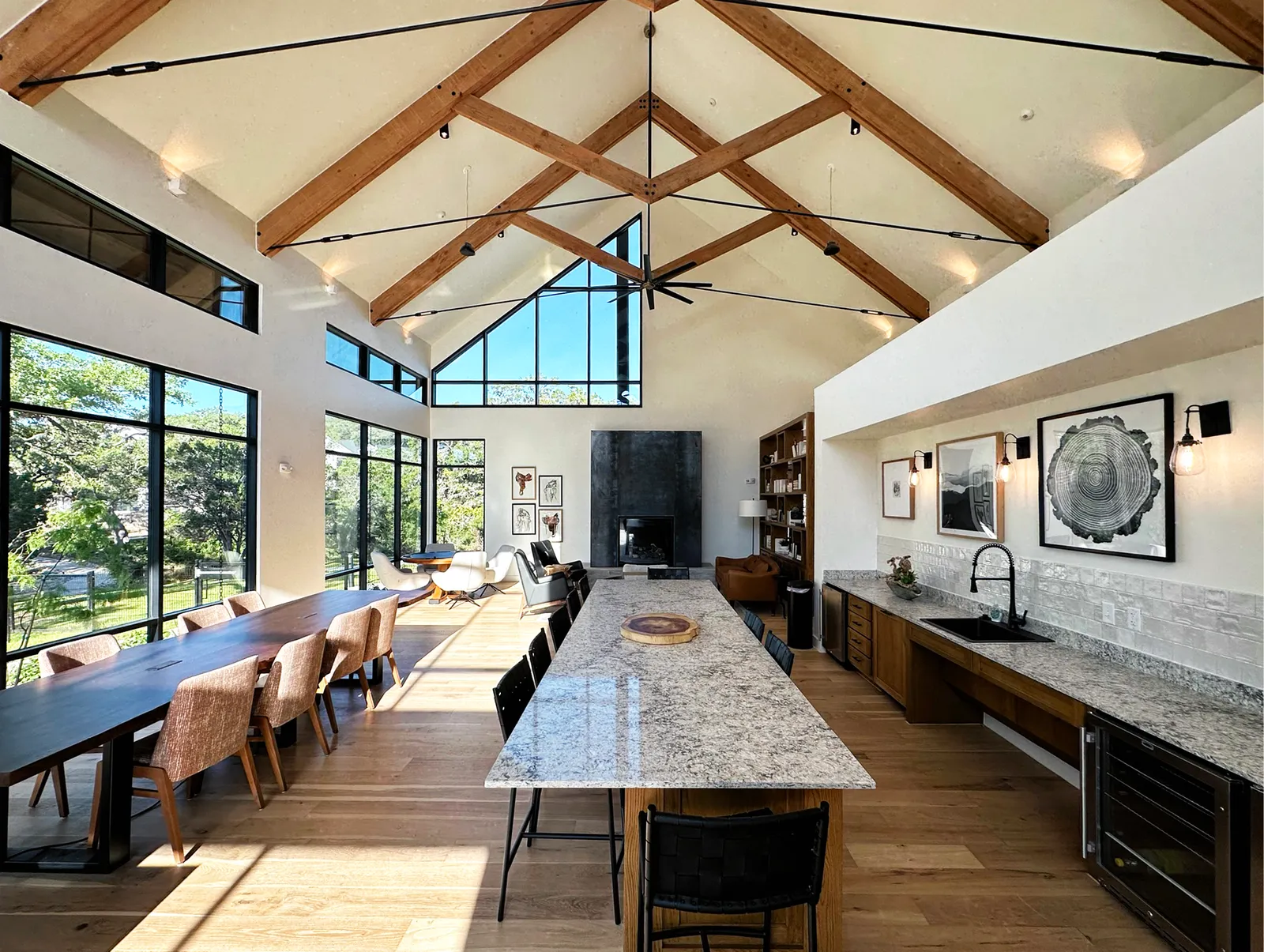
It’s not just identifying a space in the plan. It's really curating that experience, both with the activities, but also the level of finishes and things that really start to pick up on those experiences that people crave, and the different destinations that they might travel to.
Are there particular amenities that work well in suburban environments and others that are better for urban areas?
One of the most important things is you don't want people to have to get in their car to socialize with other residents. Having a clubhouse design and area where people can gather is important, and then the even more important part is the programming of it.
That's critical, just because oftentimes in suburban environments you are a little bit more of an island, whereas in an urban environment you have that city as an amenity that residents can tap into.

I think the other one is dog parks. Obviously, people love their animals. And so that's become really a necessity. In a suburban environment where you've got more space to have those outdoor areas for big and small dogs, I think those are really critical. In an urban environment it's a little bit harder oftentimes to define that space and to dedicate that space to pets but they're important.
Can you talk about some of CREO's recent projects and your amenity design strategy for them?
We're fortunate that on some of our projects, both in more urban areas and even suburban areas, that our clients have selected sites that have quote-unquote “built in amenities” just due to their location. So in our work in urban areas, you talk a lot about the city as an amenity, which is an opportunity for clients to tap into things that are already there — restaurants and bars and parks.
That reduces a little bit of that expectation, I would say, to have to include it specifically in the projects. And same with some suburban projects where you've got access to walking trails, or it's adjacent to a lot of open space, and so you can take advantage of those kind of built-in amenities.
Just as an overall strategy for us, we look at amenities as a way to almost transport residents out of their units and really take them to a new place, something that feels almost like a destination within the community.



